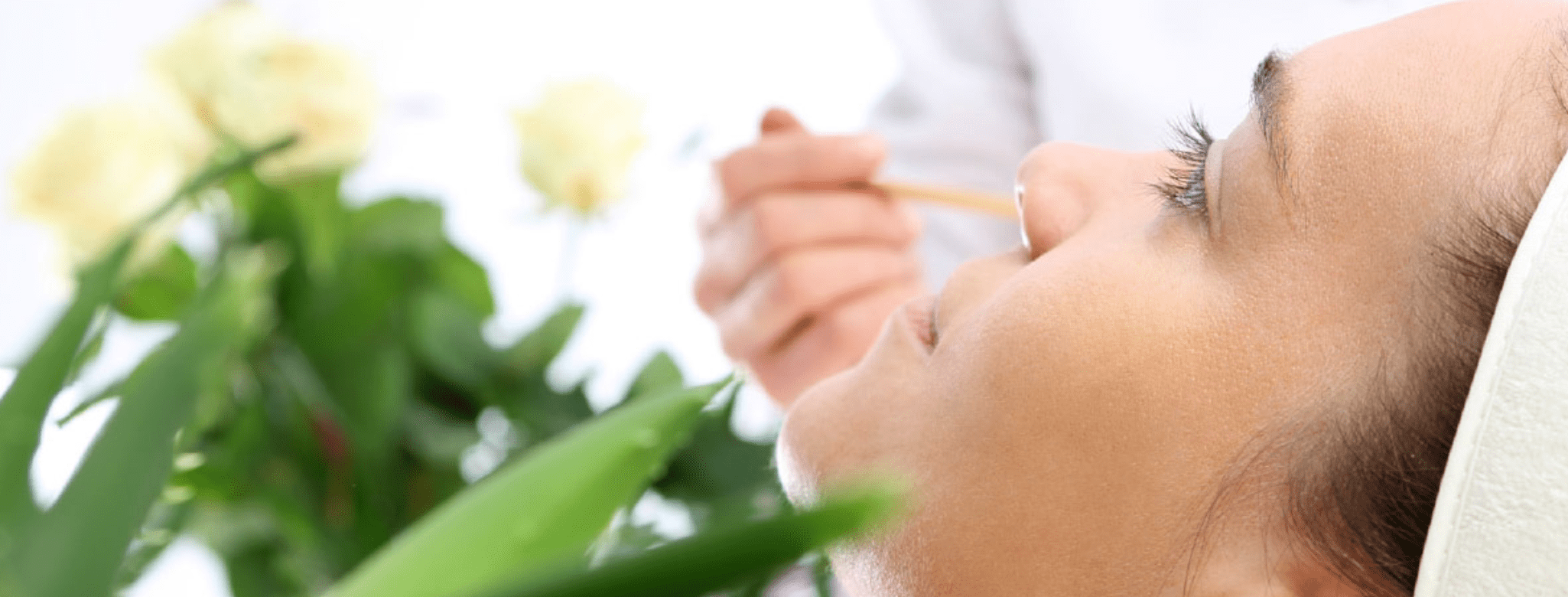IN THE ABYSS OF DRY DESERT, where not much plant life can survive, resides an oasis with a thriving succulent cactus, the aloe vera plant. Through extreme hot dry climates, aloe vera perseveres, assimilates to its environment and develops impeccable self-sustaining characteristics. It is one of the most nutrient-rich plants, encompassing more than 200 different phytonutrients including enzymes, minerals, vitamins, amino acids, polysaccharides and glycosides. Aloe vera has such powerful healing and beautifying features that it’s no surprise that the ancient Egyptians regarded it as the “plant of immortality” and the Native Americans as the “wand of heaven.”
Aloe vera has been used for centuries for its medicinal qualities. Like any plant that grows in an extreme climate, aloe vera is in a constant state of survival. This forces the plant to develop heightened self-repairing traits and a plethora of immunity boosting bio-actives. For example, if the end of an aloe leaf is cut off, the area seals itself and pulls all of its resources inward so the leaf continues to grow and regenerate from the root. Similarly, aloe vera has remarkable skin benefits when applied topically, and has wellness promoting value when taken internally.
It has become relatively common to consume aloe vera gel in beverage form as part of a regular daily diet. Studies have shown aloe vera to have a positive impact in improving many health issues, including cancer, digestive disorders like irritable bowel syndrome (IBS), ulcers, cardiovascular disease, arthritis and high cholesterol. Correspondingly, aloe vera as an ingredient in skin care products improves wellness from the outside-in. The plant’s rich composition of phytonutrients allows aloe to play many skin restoring roles.
SOOTHES SUNBURN
Aloe vera gel is available in every summer vacation destination where sunburns are common. The cooling sensation of the aloe gel is comforting for the throbbing, sensitive areas overly exposed to ultraviolet radiation. A sunburn is ultimately just inflamed skin, which in most extreme cases can be considered a wound. The high antioxidant concentration in aloe vera scavenges environmentally caused free radicals, which blocks further damage and encourages tissue repair.
REDUCES SKIN INFLAMMATIONS
The aloe vera plant contains magnesium and salicylic acid, the synergy of which creates analgesic and anti-inflammatory properties. Aloe contains eight types of enzymes including bradykinase, an enzyme that initiates blood vessel dilation. This process lessens any skin or tissue inflammation.
HEALS WOUNDS & BURNS
Aloe vera is famous for its healing capabilities. It is rich in glucomannan, which promotes cell regeneration and collagen production. When aloe vera gel is applied topically, it dries on the skin, which has a sealing effect. Under the insulated cover aloe contracts, along with the surrounding area. The wound is then protected from outside bacteria and can decrease in size. It can then stimulate blood flow and accelerate healing. This allows the cells to continue to proliferate, and ultimately cure the wound.
LESSENS STRETCH MARKS
In addition to boosting collagen production, aloe also alters the existent collagen fiber configuration. It improves the cellular matrix, aiding in stronger collagen fiber interlinking. The stronger collagen bonds assist in breaking hold of cells surrounding stretch marks, which is a type of scar tissue. The area is then advanced into a state of repair, allowing for the tissue to lessen and heal.
MOISTURIZES
The inner leaf of aloe vera is made up of 99 percent water, which is an immense amount of topical hydration if applying the raw inner gel directly to the skin. However, it is not critical to have the raw gel; a well-formulated skin care product with aloe vera has the same effect. The action of amino acids allows aloe to effectively soften hardened cells. It is rich with mucopolysaccharides as well, also known as glycosaminoglycans. This is a naturally occurring substance located in the periphery of the skin, but its production decreases with age. Mucopolysaccharides function as a humectant working to attract and bind moisture into the skin.
ANTI-AGER
Aloe’s high content of antioxidants including vitamins A, C and E help smooth the appearance of fine lines and wrinkles. The mucopolysaccharides in aloe also promote skin elasticity and firmness. The collagen repairing action and tissue healing abilities of aloe make it an appropriate ingredient in any age resisting skin care product.
ACNE
There are different grades and causes of acne, but the common culprit among all of them is bacteria. Aloe vera contains several phenols. Bacteria, when close to a phenol compound, lose their mobility. Without movement, bacteria become inactive and can no longer spread or provoke inflammation. The powerful bacteria, fungus and virus inhibiting abilities are attributed to the following antiseptic agents present in aloe vera: phenols, salicylic acid, lupeol, cinnamic acid, urea nitrogen and sulfur.
SCALP SOOTHER
Aloe vera is packed with vitamins and nutrients that are calming, soothing and moisturizing to the scalp, and many hair products now incorporate aloe vera into their formulations. Aloe works as a scalp anti-irritant and conditioner, especially for itchy scalp associated with eczema and psoriasis. The lignins in the plant facilitate deep penetration even through the thickest areas. This enhances the efficacy of the enzymes, allowing them to break down any hardened keratin and further relieve scalp discomfort.
For centuries, aloe vera has improved the well-being of populations across the map. There are virtually no contraindications, with the exception of an aloe allergy. Whether it’s a sunburn, wound or any skin sensitivity, aloe is a fast and effective topical remedy. Consider this plant your spa’s natural first-aid kit!
Written exclusively for Les Nouvelles Esthetique & Spa Magazine.
© All Rights Reserved. Published in June 2016 Issue

